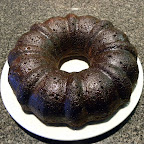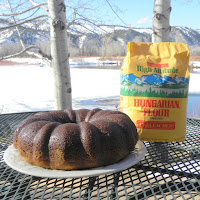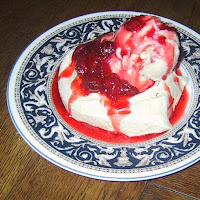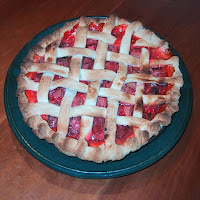
This cake is one of Christopher’s all-time favorites. The recipe is from the original
Silver Palate Cookbook by Jullee Rosso and Sheila Lukins.
NOTE WELL: Christopher tried making this recently and destroyed the cake getting it out of the pan. His second try yielded this advice:
"for your future reference... with a heavily buttered then flour-dusted pan, it practically slid out."
12 Servings
8 tablespoons (1 stick) sweet butter, at room temperature
1 ½ cups granulated sugar
4 eggs
2 cups unbleached all-purpose flour
2-½ teaspoons baking powder
½ teaspoon salt
¾ cup milk [I use ¾ cup orange juice instead]
½ cup poppy seeds
1 teaspoon vanilla extract
Grated zest of 2 oranges [I use organic oranges for zest]
Double recipe Orange Glaze [I find single is plenty]
1. Preheat oven to 325°F. Grease [heavily with butter and dust with flour - see above] a 10-inch bundt pan.
2. [In a food processor] Cream butter and sugar together in a mixing bowl until light and fluffy. Add eggs, one at a time, beating well after each addition. [I just add all the eggs at once.]
3. Siift flour, baking powder and salt together. Add to creamed mixture alternately with milk. Mix well after each addition. [I don't bother to sift and just add dry ingredients and milk all together at the same time.]
4. Fold [fold or pulse very lightly with food processor, just barely enough to mix well] in poppy seeds, vanilla and grated orange zest. Pour batter into the prepared bundt pan.
5. Set on the middle rack of the oven and bake for 50 to 60 minutes, or until edges shrink away slightly from sides of pan and a cake tester inserted into the center comes out clean. Let cake cool in the pan for 30 minutes before turning it out onto a cake rack.
6. When cake has cooled, prick holes in it 1 1/2 inches apart with a long toothpick [or small skewer], and pour [or brush with pastry brush] the Orange Glaze evenly over top.
ORANGE GLAZE
¼ c fresh orange juice
¼ c sugar
Combine the orange juice and sugar in a small sauce pan and simmer gently for five minutes, stirring occasionally, until a light syrup forms.

[If making above 6000 feet (see also
High Altitude Baking):
decrease sugar by 1T
decrease baking powder by 1 t
increase milk/orange juice by 2T
use High Altitude Hungarian Flour]
Reviewed 5/11/17


